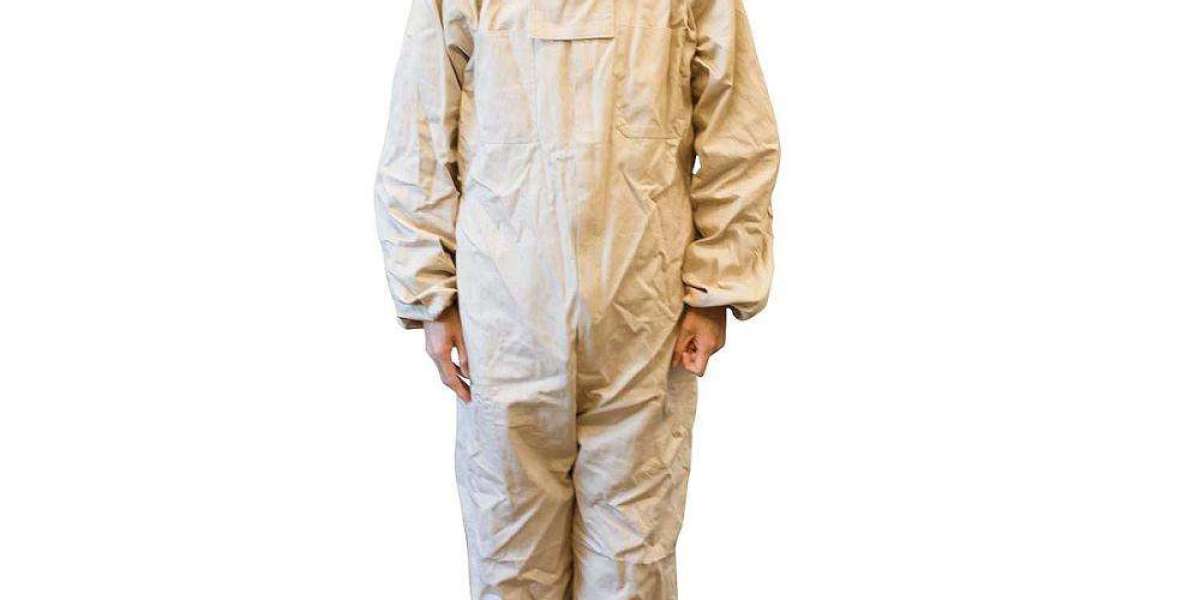As the temperatures drop and snow begins to fall, honeybees face one of their most critical challenges—surviving the winter months. Cold weather doesn't just bring harsh conditions; it also opens the door to dangerous bee diseases that can devastate an unprepared colony. For beekeepers, protecting hive health in winter requires a strategic approach that includes nutrition, insulation, disease monitoring, and of course, the right bee suits and protective gear.
In this article, we’ll explore how to recognize and prevent common winter bee diseases, why beekeeping in winter is different, and how your bee suits and beekeeping protective gear play a critical role in keeping both you and your hive safe.
Common Winter Bee Diseases and Their Impact on Hive Health
Winter is not only a season of rest for honeybees—it's also a time when bee diseases can strike silently. Some of the most dangerous ailments that affect hives during the colder months include:
1. Nosema
Nosema is a gut parasite that thrives in cold, damp environments. It causes diarrhea, weakens the immune system, and leads to colony decline. Often mistaken for dysentery, Nosema can quietly wipe out a hive if left unchecked.
2. Varroa Destructor-Associated Viruses
Varroa mites are known carriers of viruses like Deformed Wing Virus (DWV), which weaken bees and shorten their lifespan. These viruses are especially lethal in winter when the colony can’t raise new brood to replace lost workers.
3. Dysentery
Although not a disease per se, dysentery in bees results from poor diet, spoiled feed, or extreme cold. It’s marked by fecal staining near the hive entrance and can spread pathogens if left unaddressed.
Monitoring these diseases regularly and knowing how to prevent them is vital to maintain strong hive health in cold weather.
Recognizing the Signs of Hive Disease During Winter
Since hive inspections are limited during cold months, it’s important to know the subtle signs of hive disease. Here’s what you should watch for:
Unusual Bee Mortality: A large number of dead bees outside the hive.
Fecal Stains or Spotting: May signal Nosema or dysentery.
Lack of Buzz: If the hive is silent, it could indicate collapse.
Moisture and Mold: Poor ventilation can lead to condensation, which promotes mold growth.
Use winter beekeeping tips like listening with a stethoscope or checking for warmth above the cluster to assess health without fully opening the hive.
Why Bee Suits and Protective Gear Matter in Winter
While many beekeepers think bee suits are just for summer inspections, beekeeping protective gear is equally important in winter. Here’s why:
1. Quick Winter Checks Still Require Protection
Bees can still sting in winter, especially during brief warm days when they become active. Proper bee suits and beekeeping gloves protect you during these spontaneous checks, allowing you to inspect without risking stings or cold exposure.
2. Insulated Bee Suits Offer Comfort and Mobility
Cold temperatures demand extra warmth. Insulated bee suits are designed for winter beekeeping, offering protection from the elements while giving you enough mobility to perform quick inspections or add feed without freezing. Pair them with insulated beekeeping gloves to keep your hands warm and safe from both the cold and stings.
3. Avoid Contamination Between Hives
A dedicated bee suit for winter can help prevent cross-contamination if you’re managing multiple colonies. Don’t forget your beekeeping gloves—they should be sanitized or changed between hive visits to minimize the spread of pathogens.
When performing winter hive maintenance, always wear clean, well-fitted bee suits with warm underlayers and reliable beekeeping gloves. This not only protects your body from the cold and potential stings but also helps you work confidently and hygienically in frosty weather.

Winterizing Beehives to Prevent Disease
One of the best ways to avoid winter bee diseases is winterizing beehives properly before the first frost sets in. Here are the essential steps:
1. Insulate Without Sealing
Wrap your hives with breathable insulation materials to keep warmth in and moisture out. Avoid fully sealing the hive—airflow is key to preventing mold.
2. Add a Moisture Quilt Box
Moisture is the silent killer of hives. Quilt boxes absorb condensation and help maintain a dry environment inside the hive.
3. Provide Supplemental Feeding
If your bees lack adequate honey stores, feed them sugar bricks or fondant. Healthy nutrition strengthens their immune response to winter illnesses.
4. Ventilation Is Crucial
Install an upper entrance or a ventilation shim. Bees need oxygen, and excess moisture must escape to avoid creating an ideal environment for disease.
Pair these methods with regular, non-invasive checks—preferably while wearing your best gear for winter beekeeping, including insulated gloves and bee suits designed for colder climates.
Essential Winter Beekeeping Tips for Monitoring Hive Health
Beekeeping in winter doesn't mean doing nothing. Smart monitoring and minimal disruption are key. Here’s how to check on your bees without putting them at risk:
Tap and Listen: Gently knock on the hive and listen for a buzz.
Use Thermal Cameras: Detect where the cluster is located and if it's active.
Weigh the Hive: A sudden drop in weight may signal starvation.
Look for Exterior Signs: Snow blockage, dead bees, or yellow streaks are red flags.
Remember: During all these tasks, having the right beekeeping protective gear ensures you can act quickly and safely, even on a chilly winter day.
Top Bee Suits for Winter: Stay Warm, Protected, and Efficient
Not all bee suits are created equal—especially when the temperature dips. Consider these features when choosing the right winter gear:
Insulated Layering: Adds thermal protection without bulk.
Elastic Cuffs and Ankles: Prevent cold air and bees from entering.
Ventilated Panels: Prevent overheating during unexpected warm spells.
Reinforced Zippers and Seams: For durability in snowy or damp conditions.
If you're serious about beekeeping in winter, investing in a high-quality bee suits designed for cold weather is just as important as managing the hive itself.
Conclusion
Winter is a critical time for beekeepers to step up and protect their colonies. With proactive care, disease monitoring, and the right tools—including reliable bee suits—you can dramatically reduce hive loss and ensure a successful start to spring.
To recap:
Understand and recognize common winter bee diseases.
Winterize your hives to reduce moisture and maintain warmth.
Use insulated and durable bee suits for quick, safe inspections.
Monitor hive health using smart, low-impact methods.
Don’t let the cold catch you or your bees off guard—gear up, stay informed, and help your hives emerge from winter stronger than ever.







